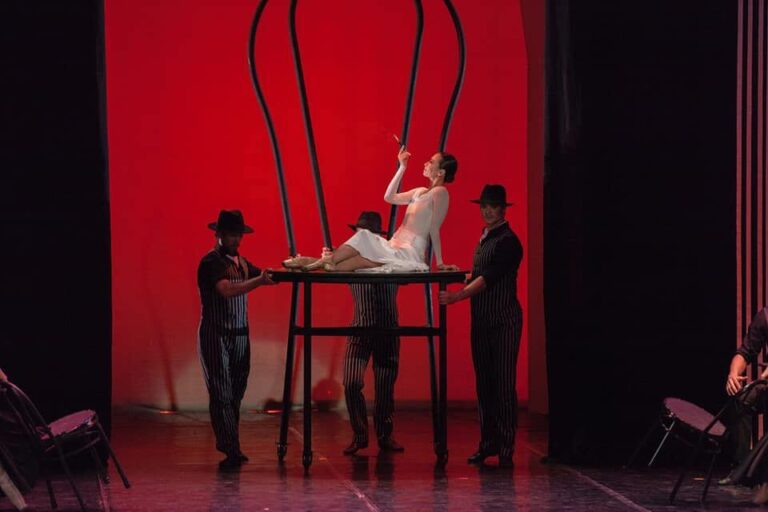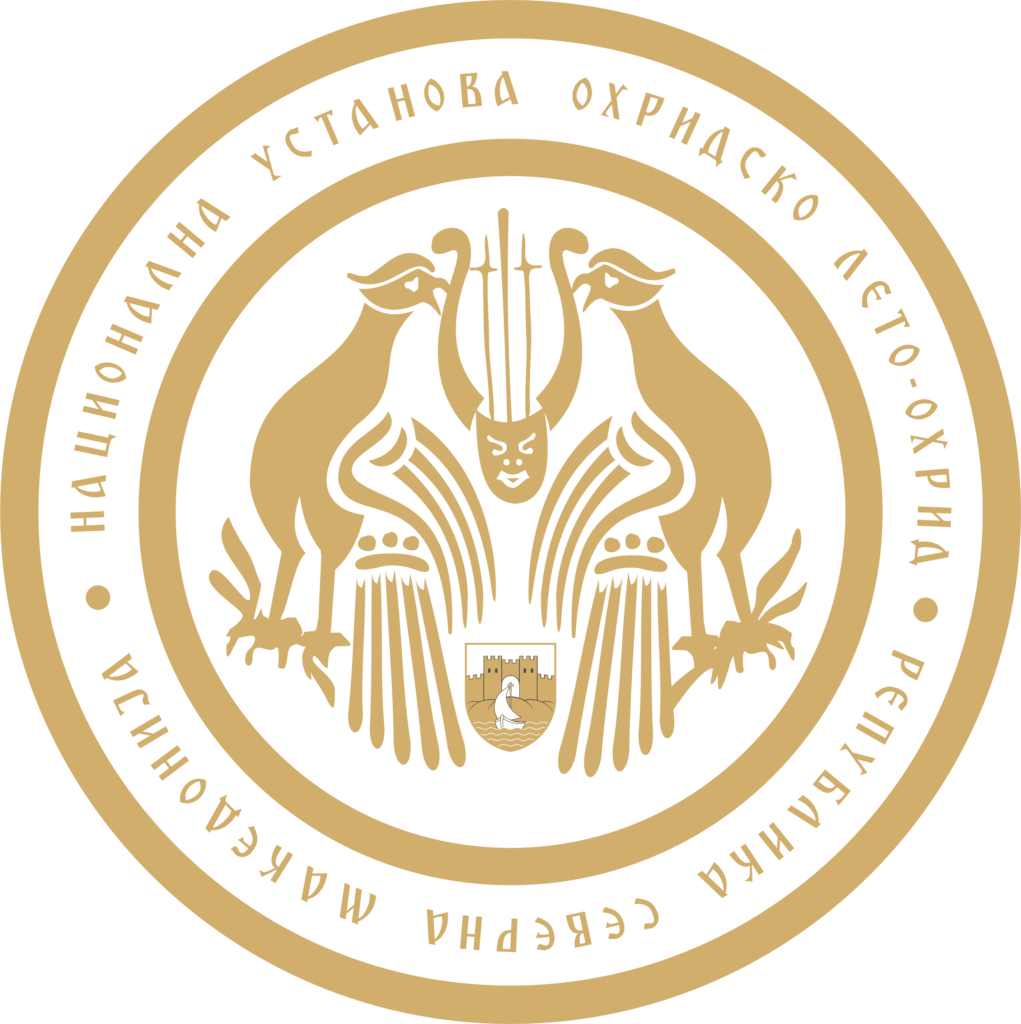LIBERTANGO



 Music: Astor Piazzolla
Choreographer: Sabrina Bosco (Italy)
Director and librettist: Natasha Poplavska
Stage and costume design: Aleksandar Noshpal
Assistant choreographers: Goran Bozhinov and Olga Pango
Assistant stage designer: Mihajlo Stojanovski
Assistant costume designer: Andrej Georgievski
Repetiteur: Biljana Pasharikovska
Design: Emil Petrov
Cast:
Asunta Maneti (Piazzolla’s mother): Aleksandra Mijalkovsa
Vicente “Nonino” Piazzolla (Piazzolla’s father): Vasil Chichiyashvili (Georgia)
Maria Nieves (tango dancer): Marija Kichevska Shokarovska
Juan Carlos Copen (tango dancer): Igor Velanoski
Carmencita Calderon (Piazzolla’s last wife): Natasha Josifovska
Dede Wolff (Piazzolla’s first wife): Sasha Evtimova
“Libertango” tells a story about the creation and the uprising of the tango. A street dance that reaches the pedestal of the world dance scene. Tango or the dance of passion, desire, jealousy, love, attraction … At the beginning of the last century in Argentina, there was often an influx of immigrants from Europe, most of whom were Italians and Spaniards. Argentina was the new promised land, a country that gave hope to the poor Italians, migrants who went to seek a better life at the beginning of the twentieth century. This is the story about the Italian family Piazzolla. The Italian immigrants, Vicente and Asunta, parents of the famous composer Astor Piazzolla, find Argentina as a country of their future. Astor’s mother, Asunta Piazzolla, is a friend of the famous Italian dancer, Carmencita Calderón, one of the first tango dancers in Argentina. She is also an Italian immigrant who develops the tango together with other dancers. Carrying out the tango steps of Asunta and Vicente Piazzolla together they develop this dance.
Through the difficult life of the immigrants in Argentina, Astor, with his little bandeon, begins to enjoy tango, jazz and classical music as a child. Growing along the streets of Buenos Aires, supported by his parents, he is more in love with music. With his music, he attracts his first love, Dede Wolff, whom he later married. Driven by the passion and love for Dede, he creates music with strong emotions, inspired by the dance of his mother Asunta and her friend, Calderón. The tango has long been an inspiration for the young Piazzolla. Through the story of his parents, the love of the woman and the passion for dance and music, Astor grows, and with it grows the tango around the world. His father starts dancing publicly with Marija Nives at the Café Bar Buenos Aires where tango dancers share the stage: Vicente, Carlos, Carmen, Asunta and Maria will inspire others to dance. This new music inspired by the tango, full of passion and love starts gaining popularity around the world.
Piazzolla’s music merges jazz, classic and the music of three enteties: Italy, Spain and Argentina.
Living between the streets, clubs, music and dance, classics, jazz, university and talent, between Buenos Aires and Paris, Astor Piazzolla creates one of the most beautiful tango compositions of the 20th century, “Libertango”.
70 years ballet
(1949-2019)
The ballet as an art form has had a life on the stage in Macedonia for 70 years. Today we can say that we’ve built an autonomous ballet tradition on the grounds of the European ballet and the ensemble continues to grow reaching new heights with every new production.
The history of our ballet tradition is strongly grounded in the many generations of ballet dancers, repetiteurs, pedagogues and choreographers that have made their mark on the artistic output in the past 70 years. However, the history is only the foundation and the ballet as an art form need continuous growth, invention, development- and it is with respect to the history and looking into the future that the Macedonian ballet theatre delivers new creations both from the classical ballet literature and the new contemporary language of ballet.
Music: Astor Piazzolla
Choreographer: Sabrina Bosco (Italy)
Director and librettist: Natasha Poplavska
Stage and costume design: Aleksandar Noshpal
Assistant choreographers: Goran Bozhinov and Olga Pango
Assistant stage designer: Mihajlo Stojanovski
Assistant costume designer: Andrej Georgievski
Repetiteur: Biljana Pasharikovska
Design: Emil Petrov
Cast:
Asunta Maneti (Piazzolla’s mother): Aleksandra Mijalkovsa
Vicente “Nonino” Piazzolla (Piazzolla’s father): Vasil Chichiyashvili (Georgia)
Maria Nieves (tango dancer): Marija Kichevska Shokarovska
Juan Carlos Copen (tango dancer): Igor Velanoski
Carmencita Calderon (Piazzolla’s last wife): Natasha Josifovska
Dede Wolff (Piazzolla’s first wife): Sasha Evtimova
“Libertango” tells a story about the creation and the uprising of the tango. A street dance that reaches the pedestal of the world dance scene. Tango or the dance of passion, desire, jealousy, love, attraction … At the beginning of the last century in Argentina, there was often an influx of immigrants from Europe, most of whom were Italians and Spaniards. Argentina was the new promised land, a country that gave hope to the poor Italians, migrants who went to seek a better life at the beginning of the twentieth century. This is the story about the Italian family Piazzolla. The Italian immigrants, Vicente and Asunta, parents of the famous composer Astor Piazzolla, find Argentina as a country of their future. Astor’s mother, Asunta Piazzolla, is a friend of the famous Italian dancer, Carmencita Calderón, one of the first tango dancers in Argentina. She is also an Italian immigrant who develops the tango together with other dancers. Carrying out the tango steps of Asunta and Vicente Piazzolla together they develop this dance.
Through the difficult life of the immigrants in Argentina, Astor, with his little bandeon, begins to enjoy tango, jazz and classical music as a child. Growing along the streets of Buenos Aires, supported by his parents, he is more in love with music. With his music, he attracts his first love, Dede Wolff, whom he later married. Driven by the passion and love for Dede, he creates music with strong emotions, inspired by the dance of his mother Asunta and her friend, Calderón. The tango has long been an inspiration for the young Piazzolla. Through the story of his parents, the love of the woman and the passion for dance and music, Astor grows, and with it grows the tango around the world. His father starts dancing publicly with Marija Nives at the Café Bar Buenos Aires where tango dancers share the stage: Vicente, Carlos, Carmen, Asunta and Maria will inspire others to dance. This new music inspired by the tango, full of passion and love starts gaining popularity around the world.
Piazzolla’s music merges jazz, classic and the music of three enteties: Italy, Spain and Argentina.
Living between the streets, clubs, music and dance, classics, jazz, university and talent, between Buenos Aires and Paris, Astor Piazzolla creates one of the most beautiful tango compositions of the 20th century, “Libertango”.
70 years ballet
(1949-2019)
The ballet as an art form has had a life on the stage in Macedonia for 70 years. Today we can say that we’ve built an autonomous ballet tradition on the grounds of the European ballet and the ensemble continues to grow reaching new heights with every new production.
The history of our ballet tradition is strongly grounded in the many generations of ballet dancers, repetiteurs, pedagogues and choreographers that have made their mark on the artistic output in the past 70 years. However, the history is only the foundation and the ballet as an art form need continuous growth, invention, development- and it is with respect to the history and looking into the future that the Macedonian ballet theatre delivers new creations both from the classical ballet literature and the new contemporary language of ballet.
https://www.kupikartizase.com/Events/libertango_2019

